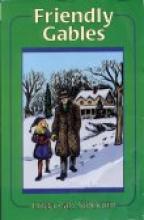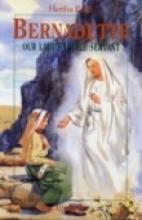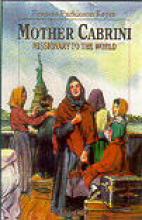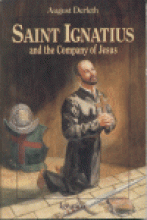No name
Friendly Gables
Subject(s):
Setting:
Grade / Age level:
Review:
Friendly Gables is the final book in the Mitchell's Series and our favorite of the bunch.The family has recently settled into a large, comfortable house in Quebec. Mother has just given birth to twins and a cranky nurse comes to help. The children are adjusting to life in Canada - including French schools and a boy who's itching to pick a fight with "Yankee" boys.
Six-year old Timmy has my children in fits of laughter every time they hear about the toothache in his tummy and his exclaims of "Good News!" They are enchanted by the Mitchell's story-telling games, their secret-hideaway in the attic and their twin baby brothers. There are of course many humorous adventures and many wonderful tidbits about family life. Despite frustrations and set-backs, in the end they see that kindness is the best policy.
This is the kind of story that we pick up when we're having a bad day, read a chapter or two aloud, and feel much better afterwards.
Six-year old Timmy has my children in fits of laughter every time they hear about the toothache in his tummy and his exclaims of "Good News!" They are enchanted by the Mitchell's story-telling games, their secret-hideaway in the attic and their twin baby brothers. There are of course many humorous adventures and many wonderful tidbits about family life. Despite frustrations and set-backs, in the end they see that kindness is the best policy.
This is the kind of story that we pick up when we're having a bad day, read a chapter or two aloud, and feel much better afterwards.
Perspective:
Catholic
Reviewed by:
First reviewed:
12-12-05
The Sally Series
Away Goes Sally, Five Bushel Farm, The Fair American, The White Horse, The Wonderful Day
Subject(s):
Setting:
Grade / Age level:
Review:
The Sally Books by Elizabeth Coatsworth
Away Goes Sally (pgs 117), Five Bushel Farm (pgs 142), The Fair American (pgs 134), The White Horse (pgs 168), The Wonderful Day (pgs 139)
In our house, we always have at least two read-alouds going: one that I read to the kids during the day and the other in the evening that Dad reads to the kids before bed. We do this year-round, so even in the summer-time we’re doing our read-alouds. My kids particularly like a series of books read to them – either books by the same author, books about the same characters or books about the same theme.
Just as we finished our “regular” school year this year, we received the Sally series by Elizabeth Coatsworth. We liked this series so much, we have talked Dad into reading them again at night later this summer!
Sally, an indomitable orphan growing up in the state of Maine during the 1790s with aunts and uncles, is a wonderfully drawn character whose “Pollyanna” attitude toward life never seems fake, but rather that of a girl who has a warm heart, living in a loving family. These books span just a few years but include bits of information about the French Revolution and the Barbary pirates marauding the Mediterranean. We learned so much not only about rural life “back then” but these books also set us off on rabbit trails to learn about the French Revolution, the French-Indian Wars, and the African pirates and the despotism of the sultans of the era.
The first book, Away Goes Sally, sets the stage for the other books. It’s 1790 and 10-year-old Sally lives with her aunts: Nannie (the eldest and thus, in charge and very domineering), Esther (the youngest), Deborah (the quiet, shy, amenable aunt). Two uncles are also in the house: Joseph (head of the household) and Eben (lazy but lovable). The five adults, all siblings, work hard to give Sally a life full of love and faith in Massachusetts. A cousin invites the family to immigrate to the “wilds of Maine” where land is abundant and fertile. Exactly how Uncle Joseph gets Aunt Nannie to move is the plot – and did we wish we were Sally along for the ride!
Five Bushel Farm starts out in Maine with Sally’s relatives, the Hallets. Cousin Ephraim has found an orphan who needs love and brings him into his house, which is anything but loving. Once Sally and her aunts and uncles get settled in Maine, they bring the orphan to their loving home as one of the aunts goes off to marry. Friendly Native Americans and building a farm are described in great detail; finding the perfect spot for their farm, and the reason behind the name of the book, create a picture of putting down roots in more ways than one.
The French Revolution comes into play in the third book, The Fair American. Pierre, the son of a courtier, must flee his family estate just before villagers, fired by revolutionary fever, set it ablaze. Escape from France means boarding a ship where we finally re-meet Sally and Andrew. I loved the way Coatsworth linked the French Revolution to peace-filled America.
A year after the adventures aboard the Fair American, Sally and Andrew convince Aunt Nannie to allow Sally to set sail again, this time for Italy. The White Horse opens with Sally and Andrew sailing into the Mediterranean on a seemingly easy voyage. An easy voyage until the ship is attacked by pirates, the captives taken to Morocco, and imprisoned in a sultan’s palace. How the characters co-exist with the Muslims in a sultan’s palace is the point of the novel. Sally’s love of life helps all around in these trying times and the conclusion is exciting in this, the longest book of the series.
The series ends with The Wonderful Day. Sally is about 16 or so and finding it hard to be the “lady” Aunt Nannie would like her to be. Still full of love and life, Sally starts the day with great optimism which quickly turns to dismay when Sally discovers that her Uncle Joseph is in financial trouble. “Saving the day” is Sally’s job as the day and troubles compound. This book brings up an interesting idea of trust, honesty and how easy it could be to dupe those who believe everyone is as honest as they are.
This series is suitable for independent readers about age 8 and up. It proved a great read-aloud series for my 6 and 10 year old boys and my 9 year old daughter. We all loved the books and they fit well with our study of American history this year, reinforcing what we learned.
Reviewed by:
First reviewed:
6-18-2009
Bernadette, Our Lady's Little Servant
Subject(s):
Setting:
Grade / Age level:
Review:
In the consistent style of the Vision Series of non-fiction Catholic stories for young people, the author presents a very engaging account of the important story of Our Lady's appearnces to Bernadette Soubirous - probably the poorest and simplest child in the small town of Lourdes, France. Bernadette's beautiful devotion is inspiring and her stubborn honesty is refreshing. More important, however, is Our Lady's message and her profound effect on those who come to her out of devotion and sometimes only curiosity. Many people who have visited the famous spring at Lourdes have experienced miraculous cures, but there are many more miracles that can be seen only within the human heart.
Perspective:
Catholic
Reviewed by:
First reviewed:
11-16-99
Francis and Clare
Saints of Assisi
Subject(s):
Setting:
Grade / Age level:
Review:
I've been reading a number of the Vision Books aloud to my five year old daughter and she seems to like each one more than the last. The story of Saint Francis is both uplifting and enjoyable, due to the many humorous events captured in the story. The book is also informative enough to be interesting to older children and even adults (I had never read a full-length book about St. Francis).
Perspective:
Catholic
Reviewed by:
First reviewed:
1998-99
Lydia Longley, The First American Nun
Subject(s):
Setting:
Grade / Age level:
Review:
Dramatic changes are in store for Lydia Longley when her father brings home a new mother for his children. At the time she is twelve-years-old. This change, however, proves to be small in comparison to the traumatic event that changes her life forever when she is twenty.
While everyone is busy preparing breakfast, a party of Abenaki Indians raids their peaceful farm, killing her parents, brothers and sisters. Miraculously, they spare her life along with her younger brother and sister. Sadly, her three-year-old sister does not survive the treacherous journey north.
Upon arriving in Ville-Marie (Montreal, Canada), Lydia begins her new life. Having grown up in a serious Puritan family, the changes are rather startling. What is life like in her new home? What are these strange customs these French Catholics do? Who is the mysterious Jeanne LeBer? How did she survive the long and arduous trek from Groton, Massachusetts to Ville-Marie at the hands of her Indian captors?
While remaining faithful to the actual events of her life, Lydia Longley, the First American Nun presents an interesting and inspiring account of her life. The reader is also introduced to Blessed Jeanne LeBer (Leber). Lydia lived from 1674-1758.
Perspective:
Catholic
Reviewed by:
First reviewed:
2-18-2008
Mother Cabrini
Missionary to the World
Subject(s):
Setting:
Grade / Age level:
Review:
The story of the great Italian missionary to the United States is told to two young students in one of the schools she founded. The story especially elaborates on the history of the schools and works founded by Mother Cabrini in New Orleans, Louisiana. A very beautiful story already, this particular rendition has the unique angle of being told by one of the Sisters of Charity who had come to America from Italy with Mother Cabrini. This would make a good read aloud story for the whole family and would be a helpful supplement to your American History curriculum.
Perspective:
Catholic
Reviewed by:
First reviewed:
1998-99
Saint Anthony and the Christ Child
Subject(s):
Setting:
Grade / Age level:
Review:
In the tradition of the Vision Series, this book is a very readable and even enjoyable story of one of the most popular saints whom no one seems to know very much about. Although he is commonly known as Saint Anthony of Padua (Italy) and Finder of Lost Things, Saint Anthony actually hails from Portugal. The beginning of the story, the author admits, is somewhat fictional as very little is known about Saint Anthony's early life. An extremely gifted, orator, Saint Anthony traveled throughout Europe as a humble Franciscan (during the lifetime of Saint Francis of Assisi), preaching the faith, performing miracles, and spreading his devotion to the Christ Child. You'll also learn why Saint Anthony is the patron of the Lost - but I don't want to spoil that for you!
I found it rather disappointing to learn at the end of the story that almost the entire childhood portion of the story is fictitious.
I found it rather disappointing to learn at the end of the story that almost the entire childhood portion of the story is fictitious.
Perspective:
Catholic
Reviewed by:
First reviewed:
3-17-2000
Saint Dominic and the Rosary
Subject(s):
Setting:
Grade / Age level:
Review:
It is the late twelfth century and Christendom is threatened from within by the Albigensian heresy - a belief that the world is so evil that it must have been created by the devil. The consequences of this are more serious than one might at first think. Although they believe the man's soul was created by God (and therefore good), the Albigensians (who presumably "started out" as Catholics) reject the doctrine of the Real Presence because they believed the bread and wine were made by the devil, they didn't believe in marriage and having children and even went so far as justifying murder and suicide.
Enter Dominic de Guzman. Dominic decided to be a priest when he was very young. He understood the importance of all of his studies as preparation for his vocation. "A priest, or in fact any well-educated person, must learn all that he possibly can about all subjects He must learn not only those that are especially necessary for his chosen work." The story contains an excellent explanation of a good education and its purpose. "You must perfect yourself in arithmetic, algebra, geometry - the exact sciences, which will teach you to think clearly. You must learn to read with understanding...And, of course, logic. That will teach you to reason in a sound and exact way."
The story follows the life of St. Dominic as becomes a great preacher, continually arguing against the Albigensian heresy. He has limited success, however, until Our Lady appears to him and entrusts him with one of the greatest heavenly gifts - the Rosary.
This is an excellent story, well written and understandable, and filled with many important insights for us today.
Enter Dominic de Guzman. Dominic decided to be a priest when he was very young. He understood the importance of all of his studies as preparation for his vocation. "A priest, or in fact any well-educated person, must learn all that he possibly can about all subjects He must learn not only those that are especially necessary for his chosen work." The story contains an excellent explanation of a good education and its purpose. "You must perfect yourself in arithmetic, algebra, geometry - the exact sciences, which will teach you to think clearly. You must learn to read with understanding...And, of course, logic. That will teach you to reason in a sound and exact way."
The story follows the life of St. Dominic as becomes a great preacher, continually arguing against the Albigensian heresy. He has limited success, however, until Our Lady appears to him and entrusts him with one of the greatest heavenly gifts - the Rosary.
This is an excellent story, well written and understandable, and filled with many important insights for us today.
Perspective:
Catholic
Reviewed by:
First reviewed:
11-16-99
Saint Ignatius and the Company of Jesus
Subject(s):
Setting:
Grade / Age level:
Review:
Saint Ignatius of Loyola, the well-known saint/scholar, founder of the Jesuits and author of the Spiritual Exercises, was a surprisingly simple and humble man. Although he was rather arrogant and adventurous as a young soldier, a serious battle wound forced him into an extended bed rest. Restless and bored, he finally gave in to reading the only two books available to him - The Life of Our Saviour and The Lives of the Saints. Reading and studying these stories placed Ignatius onto a new and completely unexpected path - one of serious devotion to God and profound humility. The story follows his life as he seeks God's will, returns to school as a 33 year old man, gains folllowers while in the University and finally puts together his dream of "the Company of Jesus."
We are reminded in the story of what effect the stories of the lives of the Saints can have. The story of Ignatius is of particular value, not only because of his great effect on the world, but also because of the glimpse we are given of the spiritual development that takes place within him as he seeks to do God's will. Despite the depth of content, the story is told in a simple enough manner to be understood and appreciated by the whole family.
We are reminded in the story of what effect the stories of the lives of the Saints can have. The story of Ignatius is of particular value, not only because of his great effect on the world, but also because of the glimpse we are given of the spiritual development that takes place within him as he seeks to do God's will. Despite the depth of content, the story is told in a simple enough manner to be understood and appreciated by the whole family.
Perspective:
Catholic
Reviewed by:
First reviewed:
11-16-99









